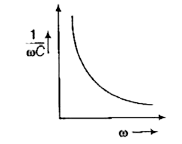Plot the variation of 1ωC with ω.

Variation of 1ωC with ω

Similar Questions
Draw a plot of the variation of amplitude versus ω for an amplitude modulated wave. Define modulation index. State its importance for effective amplitude modulation.
View SolutionA platinum resistance thermometer makes use of the variation of a conductor with temperature. If the resistance of this thermometer is 5Ω at 20∘C and 16Ω when inserted in a furnace, find the temperature of the furnace. Given α for the platinum =0.0036∘C.
View Solution
Knowledge Check
If ω be complex cube root of unity satisfying the equation 1a+ω+1b+ω+1c+ω=2ω2and1a+ω2+1b+ω2+1c+ω2=2ω then 1a+1+1b+1+1c+1 is equal to
A2B−2C−1+ω2D−1+ωLet a,b, and c be three real numbers satistying [a,b,c]⎡⎢⎣197827737⎤⎥⎦=[0,0,0] Let ω be a solution of x3−1=0 with Im(ω)>0.Ifa=2 with b nd c satisfying (E) then the vlaue of 3ωa+1ωb+3ωc is equa to (A) -2 (B) 2 (C) 3 (D) -3
A-2B2C3D-3
A series combination of an inductor (L), capacitor (C) and a resistor (R) is connected across an ac source of emf of peak value E0 and angular frequency (ω). Plot a graph to show variation of impedance of the circuit with angular frequency (ω).
View SolutionIf ω± 1 is a cube root of unity, the value of a+bω+cω2b+cω+aω2+a+bω+cω2c+aω+bω2=?
View SolutionPlot a graph showing the variation of stopping potential with the frequency of incident radiation for two different photosensitive having work functions W1andW2(W1>W2) . On what factors does the (i) slope and (ii) intercept of the lines depend ?
View SolutionPlot a graph showing the variation of stopping potential with the frequency of incident radiation for two different photosensitive materials having work functions W1andW2(W1>W2). On what factors does the (i) slope and (ii) intercept of the lines depend ?
View SolutionIf ω is a cube root of unity and △=∣∣∣12ωωω2∣∣∣, then △2 is equal to (A) −ω (B) ω (C) 1 (D) ω2
View SolutionIf one of the cube roots of 1 be ω, then ∣∣ ∣ ∣∣11+ω2ω21−i−1ω2−1−i−1+ω−1∣∣ ∣ ∣∣ (A) ω (B) i (C) 1 (D) 0
View Solution
